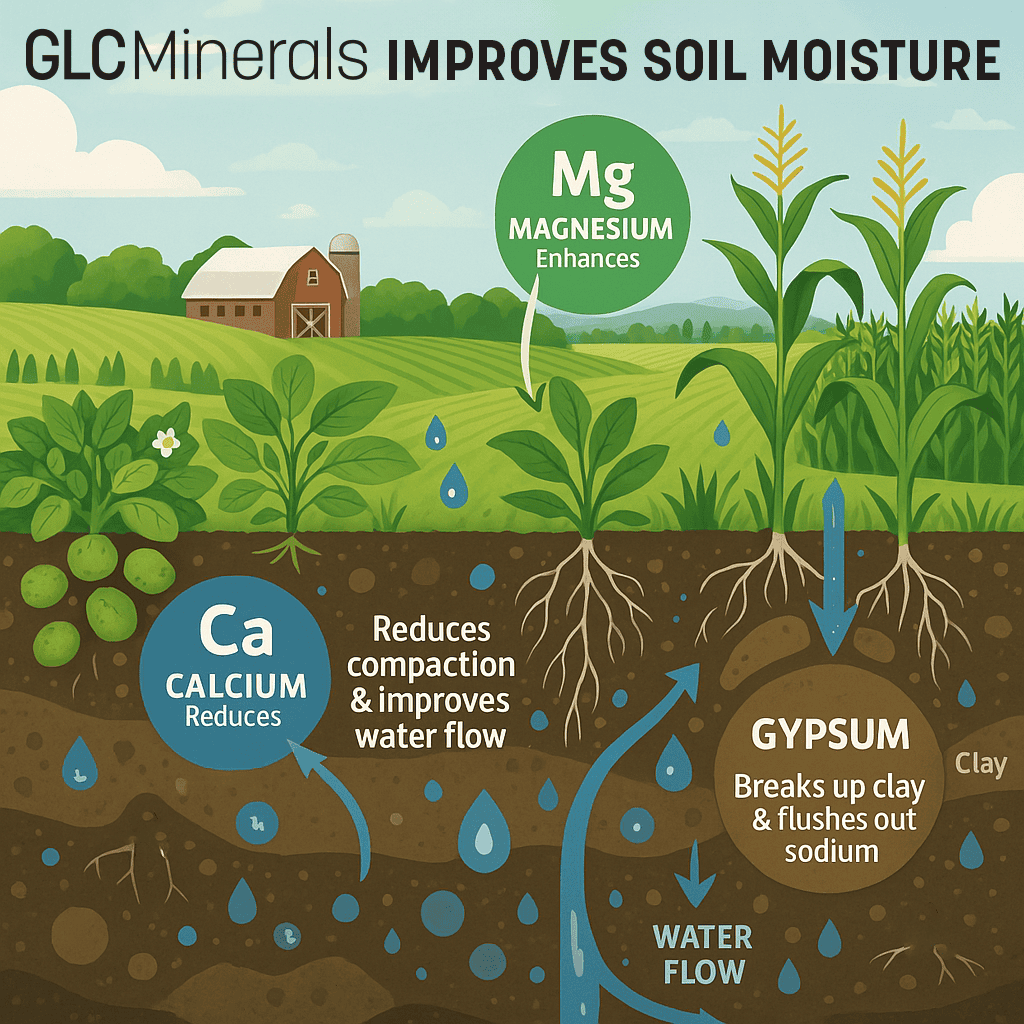
The Dirt on Moisture
Minerals That Make Soil Thrive in Wisconsin
In the ever-changing climate of Wisconsin, where spring rains can quickly give way to summer droughts, soil moisture retention is more than a convenience—it’s a necessity. For farmers and agronomists alike, understanding the role of key soil minerals like calcium, magnesium, and gypsum can be the difference between a good yield and a great one.

Why Soil Moisture Retention Matters
Adequate soil moisture is the foundation of successful farming. It influences seed germination, nutrient uptake, and microbial activity for better soil quality. But not all soils hold water equally. Sandy soils drain too quickly, while clay-heavy soils may retain water but restrict root growth and oxygen flow. The key to balance lies in soil structure—and that’s where calcium, magnesium, and gypsum come in.
CALCIUM:
Essential for Soil Health
- Reduces compaction – Loosens heavy soils like clay.
- Supports root growth – Easier root expansion improves nutrient and water access.
- Improves water flow – Enhances drainage and moisture availability.
- Boosts air flow – Promotes root respiration and microbial activity.
MAGNESIUM:
The Secret Weapon
- Powers photosynthesis – Vital for chlorophyll and plant energy.
- Enhances nutrient uptake – Aids absorption of phosphorus and nitrogen.
- Balances pH – Helps neutralize acidic soils.
- Improves structure – Binds clay particles for better water retention.
- Prevents deficiencies – Reduces yellowing and stunted growth.
GYPSUM:
Unlock Soil Potential
- Breaks up compacted soil – Improves root growth and water infiltration.
- Adds calcium and sulfur – Supplies key nutrients without altering pH.
- Flushes out salts – Helps reclaim salty or sodic soils.
- Prevents crusting – Reduces erosion and improves seedling emergence.
Practical Tips for Wisconsin Farmers
- Test Your Soil:
Start with a comprehensive soil test to understand your calcium, magnesium, and sulfur levels. - Watch the Ratios:
Don’t just look at individual nutrient levels—pay attention to the balance between calcium and magnesium. - Consider Gypsum Applications:
Especially in compacted or poorly draining fields, gypsum can be a cost-effective solution. - Monitor Moisture:
Use soil moisture sensors or simple field tests to track how well your soil retains water after amendments.

UltraCal™
A high-purity calcium source that boosts soil structure and helps water soak in where it’s needed most.
UltraMag™
A balanced magnesium amendment that strengthens plant health without tightening up your soil.
MegaSol™
Our premium gypsum that keeps water moving, breaks up compaction, and adds essential sulfur to the mix.
Let’s grow better, together—starting from the ground up
Want to learn how GLC’s agronomy solutions can support your farm’s success—season after season?